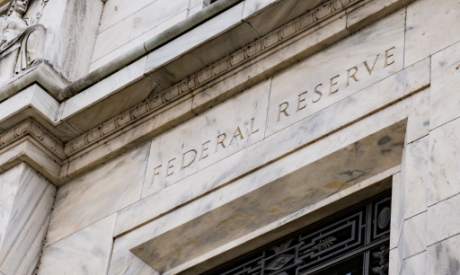Macro
Contrary to popular belief (that the US is now less rates sensitive), our macro framework continues to heavily factor in the impact of higher rates. It’s true that many homeowners have “locked-in” low rates but in the process such homeowners are less likely to move (which flips the meaning of locked-in). And yes, the majority of corporates are fine when it comes to debt servicing and access to credit (yet it’s always the borrower at the margin that matters).
We still believe the impact of Fed hikes are making their way through the US economy. That said, we are not expecting the normal channels of housing and US corporate credit to be where it first shows up (although if the Fed doesn’t cut as they project in the dot-plot – even these normal channels will get hit eventually as time passes). We now have new rate channels to watch, the levered to low rates CRE-sector, the consumer, and the US government.
Meanwhile, the idea of US exceptionalism (that the US can decouple from the rest of the world via inventions like A.I.) are just narratives, not a reality. Also, US exceptionalism (and latest solid GDP) shouldn’t be confused for the large sums of fiscal spending that are partially offsetting the Fed’s tightening.
Further complicating matters is that the US data, on aggregate, looks solid. However, when one looks under the surface, there are plenty cracks forming.
In our view, the consumer is less dynamic than aggregate data suggests and it’s also highly dependent on the jobs market not skipping a beat. Meanwhile small businesses, which do most of the hiring, are not as robust. In many ways the US economy is bifurcated into “haves and have nots”. We add the consumer to this designation (and do a deeper dive in our special topic which covers the wealth effect vs interest expense), yet the same can be said about large corporates vs smaller businesses access to credit, large vs small banks liquidity profiles and the public vs the private markets. The list goes on…
Special Topics
- March FOMC Recap: Fed’s confidence to ease continues to build…
- FCI: There’s more than one way to measure FCI for the US economy…
- Consumer Health: Balance-sheet “rich” but income statement “poor”
- US Cross-FI RV: MBS is now outperforming as IG spreads are stalling out
Markets
We adjusted our rates path (pg 9) but continue to expect the Fed to cut rates more than what is priced-in or in their dot-plot. The easing cycle will likely first start off as a normalization (given high real rates) and then morph into a large cutting cycle as the jobs data worsens into ‘25 and/or if markets roll-over (on their own or if a credit/liquidity event transpires). CBs don’t want to admit it, but a steeper curve helps all (CRE, Banks, levered consumer etc).
Please see the PDF report link above for the full write-up with charts and forecasts…


